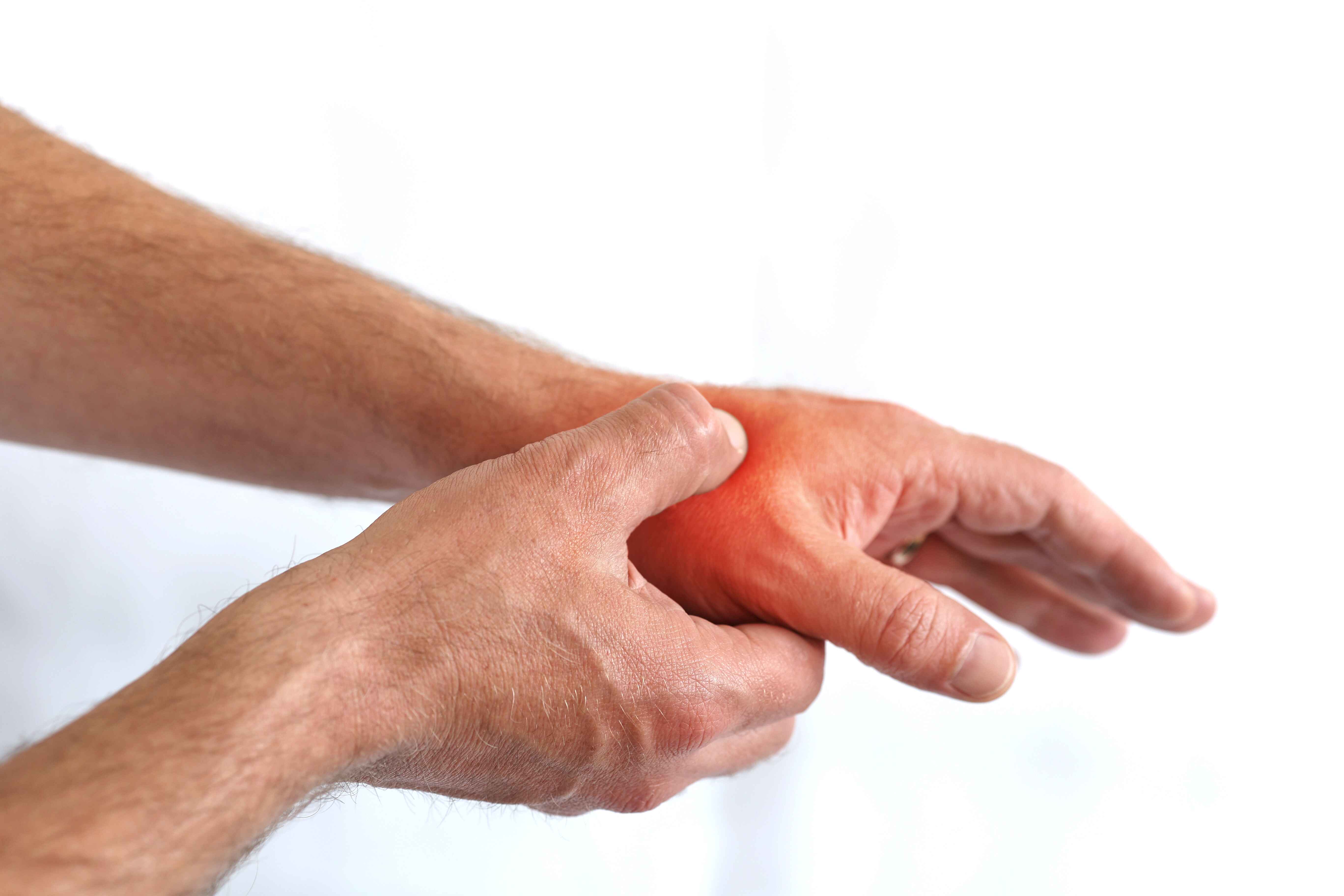Carpal Tunnel Syndrome (CTS) : Symptoms, Causes & Treatment
Written By: Dr. Mohamed Ghanem
Updated On:January 26, 2025

What is Carpal Tunnel Syndrome (CTS)?
When the median nerve, which travels from your forearm into the palm of your hand, is compressed or pinched at the wrist, carpal tunnel syndrome (CTS), a common neurological condition, results. Your hand and wrist may hurt, and you might have numbness, paralysis, and swelling that renders your fingers unusable.
Causes of Carpal Tunnel Syndrome (CTS)
Although there is no known reason for the majority of instances of carpal tunnel syndrome, any one or all of the following may be a contributing factor:
- Frequent, repeated hand motions, such as while using a keyboard or typing
- Frequent, repeated hand movements including gripping, as seen in sports and other athletic activities
- Disease of the joints or bones (such as rheumatoid arthritis, osteoarthritis, or arthritis)
- Hormonal or metabolic changes, such as those brought on by menopause, pregnancy, or a thyroid condition
- Alterations in blood sugar levels (which are possible in type 2 diabetes)
- Other ailments or injuries affecting the wrist, such as a strain, sprain, break, dislocation, or edema and inflammation
- A history of carpal tunnel syndrome in the family
Symptoms of Carpal Tunnel Syndrome (CTS)
The following are some common signs and symptoms of carpal tunnel syndrome (CTS)
- Numbness or tingling. Fingers or hands may feel tingly or numb. Usually, the thumb, index, middle, or ring finger are affected, but not the little finger. These fingers may feel electric shock-like. These symptoms could awaken you from sleep or happen while you're holding the phone, newspaper, or steering wheel.
- Weakness. Hand tremors can lead to unintentional item drops. This could occur because the muscles responsible for pinching with the thumb, which are also controlled by the median nerve, might be feeble, or it could be due to a sensation of numbness in the hand.
When to see a doctor for Carpal Tunnel Syndrome (CTS)?
If your regular activities or sleep habits are being disrupted by carpal tunnel syndrome symptoms, see a doctor immediately. Damage to the muscles and nerves might become permanent without treatment.
Carpal Tunnel Syndrome (CTS) Risk Factors
Numerous factors have been connected to carpal tunnel syndrome. Even though they may not be the main contributing factor to carpal tunnel syndrome, they may increase the median nerve's susceptibility to irritability or damage. These include:
- A wrist fracture, dislocation, or arthritis that deforms the minuscule bones of the wrist and puts pressure on the median nerve may cause the space within the carpal tunnel to shift.
- Carpal tunnel syndrome is often more common in women. This might be a result of women's carpal tunnels being smaller than that of men.
- The risk of nerve injury, particularly damage to the median nerve, is increased by a number of chronic conditions, including diabetes.
- The lining around the tendons in the wrist can be impacted by rheumatoid arthritis and other inflammatory diseases, placing pressure on the median nerve.
- Obesity increases the likelihood of developing carpal tunnel syndrome.
- The median nerve may become irritated if fluid retention raises the pressure inside the carpal tunnel. This frequently occurs during menopause and pregnancy. Pregnancy-related carpal tunnel syndrome often gets better on its own after giving birth.
- Carpal tunnel syndrome may be more likely in those who have menopause, thyroid issues, renal failure, lymphedema, and other medical concerns.
- Working with vibrating equipment or on an assembly line that necessitates prolonged or repetitive wrist flexion can put a damaging strain on the median nerve or exacerbate already present nerve injury. This is especially true if the activity is done in a chilly environment.
Carpal Tunnel Syndrome (CTS) Complications
The median nerve may suffer irreparable damage as a result of carpal tunnel syndrome, leaving the person permanently disabled and impaired. Moreover, the muscles near the base of the thumb in the palm of the hand may atrophy and become weak because of CTS. This may cause the afflicted fingers to lose their dexterity.
Carpal Tunnel Syndrome (CTS) Diagnosis
In order to identify if you have carpal tunnel syndrome, your doctor may ask you questions and perform one or more of the tests listed below:
- Symptoms. The symptom pattern will be examined by your healthcare practitioner. For instance, since the little finger doesn't receive sensation from the median nerve, problems in that finger may point to anything other than carpal tunnel syndrome.
- Physical assessment. Your healthcare professional will examine you physically. He or she will assess the strength of the hand's muscles and the sensation in the fingers.
- X-ray. To rule out alternative causes of wrist discomfort, such as arthritis or a fracture, some medical professionals advise taking an X-ray of the afflicted wrist. However, X-rays are useless for identifying carpal tunnel syndrome.
- Ultrasound. To gain a clear view of the bones and nerves in your wrist, your doctor can advise an ultrasound. By doing so, you can assess whether the nerve is being squeezed.
- Electromyography. This examination examines the minute electrical discharges that muscles make. In order to measure the electrical activity that occurs when muscles contract and relax, your doctor will implant a thin-needle electrode into a few selected muscles during this test. This test may rule out other disorders while detecting damage to the muscles the median nerve controls.
- Study of nerve conduction. Two electrodes are attached to the skin in an electromyography version. To determine whether electrical impulses in the carpal tunnel are delayed, a brief shock is delivered to the median nerve.
Carpal Tunnel Syndrome (CTS) Treatment
As soon as symptoms appear, start treatment for carpal tunnel syndrome. Simple self-care measures you may take in the beginning may help the issue go. Consider taking more regular rests to give your hands a rest, staying away from activities that exacerbate symptoms, and using cold packs to minimize swelling.
Wrist splinting, drugs, and surgery are further therapeutic possibilities. If your symptoms have only been mild to moderate and intermittent for less than 10 months, splinting and other conservative therapies are more likely to be effective. You should visit a medical professional if your hands are numb.
Carpal Tunnel Syndrome (CTS) Prevention
Carpal tunnel syndrome cannot be prevented, although the following techniques can reduce stress on the hands and wrists:
- Relax your grasp and use less force. Use a light touch while pressing the keys on a keyboard or cash register, for example. Use a large pen with a large, comfortable grip adapter and free-flowing ink for lengthy handwriting.
- Take quick, regular breaks. Periodically, gently bend and extend your hands and wrists. Change your tasks whenever you can. This is crucial if you work with machinery that vibrates or demands you to apply a lot of power. Every hour, even a few minutes can make a difference.
- Maintain proper posture. You should not fully extend or contract your wrist. The ideal position is a comfortable, central one. Maintain a keyboard that is elbow height or just below. Moreover, the forward rolling of the shoulders caused by poor posture shortens the muscles in the neck and shoulders and presses the neck's nerves. In addition to causing neck discomfort, this can hurt the hands, wrists, and fingers.
- Replace the mouse on your PC. Make sure your wrists are not strained by your computer mouse.
- Keep your hands warm. Working in a chilly environment increases your risk of developing hand discomfort and stiffness. Wear fingerless gloves with wrist warmers if you can't manage the temperature at work.
References
Ali, K. M., & Sathiyasekaran, B. W. C. (2006). Computer professionals and carpal tunnel syndrome (CTS). International Journal of Occupational Safety and Ergonomics, 12(3), 319-325.
Atroshi, I., Gummesson, C., Johnsson, R., Ornstein, E., Ranstam, J., & Rosén, I. (1999). Prevalence of carpal tunnel syndrome in a general population. Jama, 282(2), 153-158.
Bland, J. D. (2007). Treatment of carpal tunnel syndrome. Muscle & Nerve: Official Journal of the American Association of Electrodiagnostic Medicine, 36(2), 167-171.
Genova, A., Dix, O., Saefan, A., Thakur, M., & Hassan, A. (2020). Carpal tunnel syndrome: a review of literature. Cureus, 12(3).
Wilson, J. K., & Sevier, T. L. (2003). A review of treatment for carpal tunnel syndrome. Disability and rehabilitation, 25(3), 113-119.
Meet our doctors from the Orthopaedics department





















































